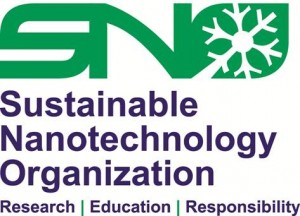Most accessed articles from October – December 2013
Natural water chemistry (dissolved organic carbon, pH, and hardness) modulates colloidal stability, dissolution, and antimicrobial activity of citrate functionalized silver nanoparticles
Lok R. Pokhrel, Brajesh Dubey and Phillip R. Scheuerman
Environ. Sci.: Nano, 2014,1, 45-54
DOI: 10.1039/C3EN00017F
A chemical free, nanotechnology-based method for airborne bacterial inactivation using engineered water nanostructures
Georgios Pyrgiotakis, James McDevitt, Andre Bordini, Edgar Diaz, Ramon Molina, Christa Watson, Glen Deloid, Steve Lenard, Natalie Fix, Yosuke Mizuyama, Toshiyuki Yamauchi, Joseph Brain and Philip Demokritou
Environ. Sci.: Nano, 2014,1, 15-26
DOI: 10.1039/C3EN00007A
A minor lipid component of soy lecithin causes growth of triangular prismatic gold nanoparticles
Benjamin R. Ayres and Scott M. Reed
Environ. Sci.: Nano, 2014,1, 37-44
DOI: 10.1039/C3EN00015J
Alterations of intestinal serotonin following nanoparticle exposure in embryonic zebrafish
Rıfat Emrah Özel, Kenneth N. Wallace and Silvana Andreescu
Environ. Sci.: Nano, 2014,1, 27-36
DOI: 10.1039/C3EN00001J
Interactions between polybrominated diphenyl ethers and graphene surface: a DFT and MD investigation
Ning Ding, Xiangfeng Chen and Chi-Man Lawrence Wu
Environ. Sci.: Nano, 2014,1, 55-63
DOI: 10.1039/C3EN00037K
Quantification of carbon nanomaterials in vivo: direct stable isotope labeling on the skeleton of fullerene C60
Xue-Ling Chang, Longfei Ruan, Sheng-Tao Yang, Baoyun Sun, Cuibin Guo, Liangjun Zhou, Jinquan Dong, Hui Yuan, Gengmei Xing, Yuliang Zhao and Min Yang
Environ. Sci.: Nano, 2014,1, 64-70
DOI: 10.1039/C3EN00046J
Why not take a look at the articles today and blog your thoughts and comments below.
Fancy submitting an article to Environmental Science: Nano? Then why not submit to us today or alternatively email us your suggestions.




















